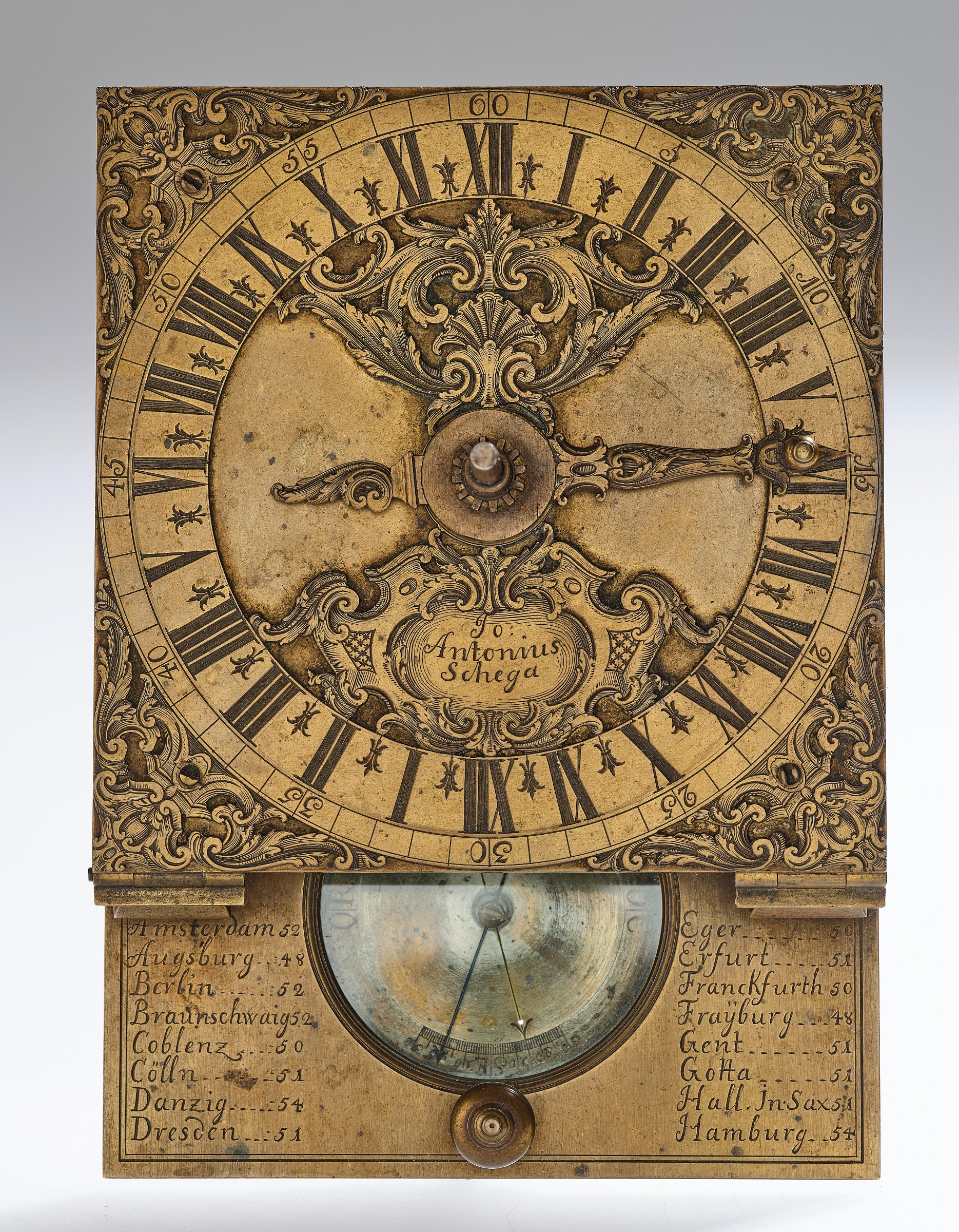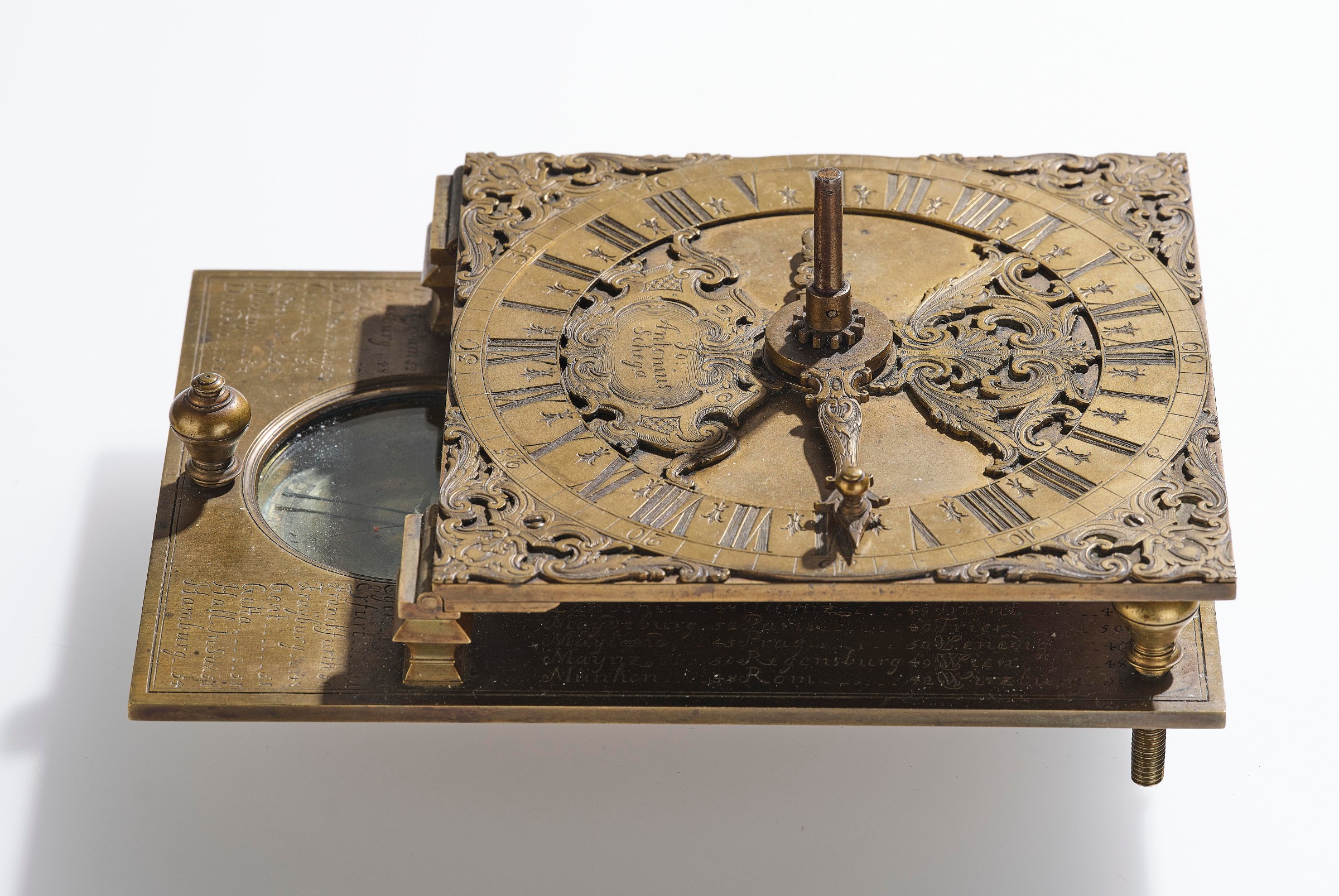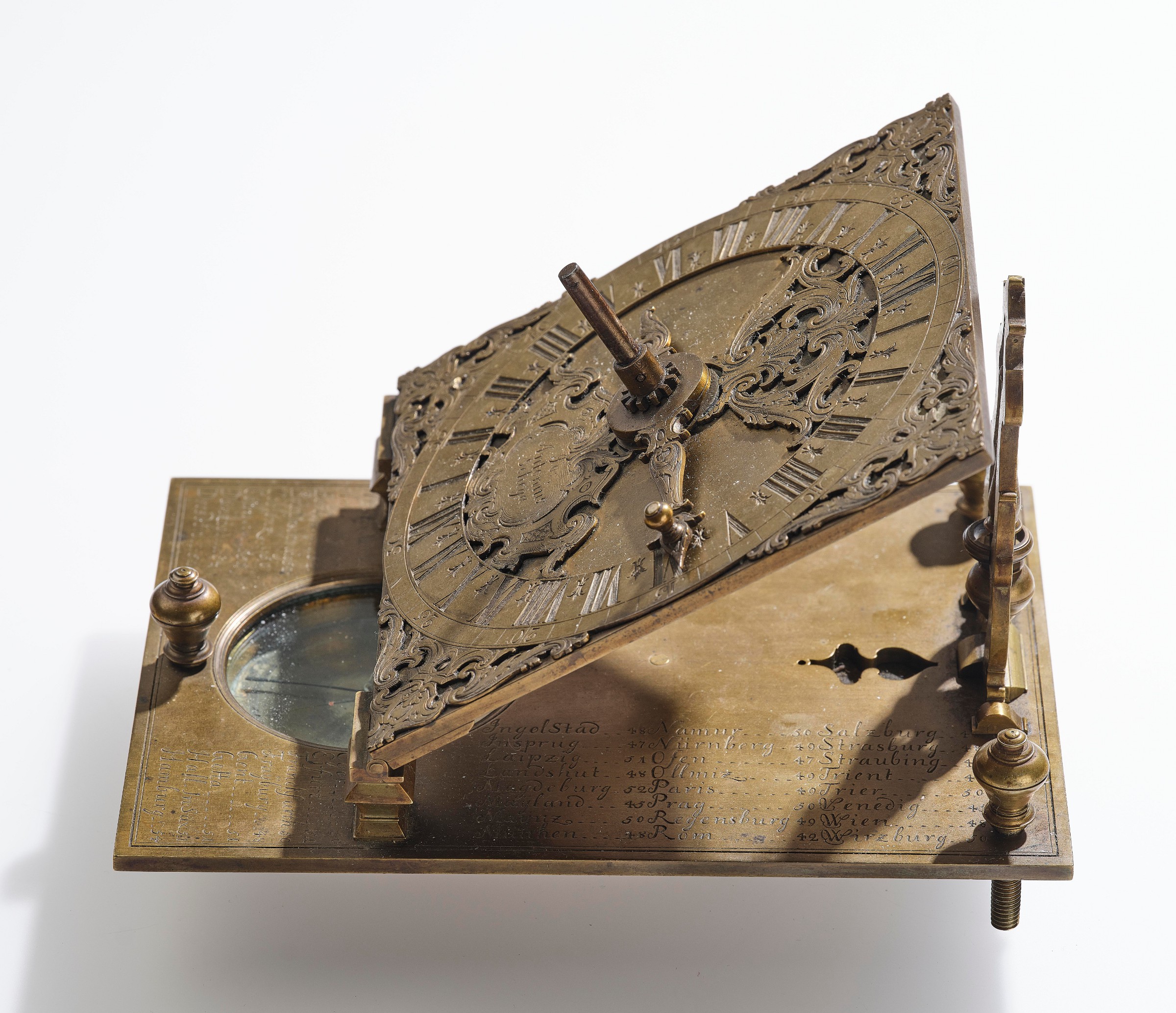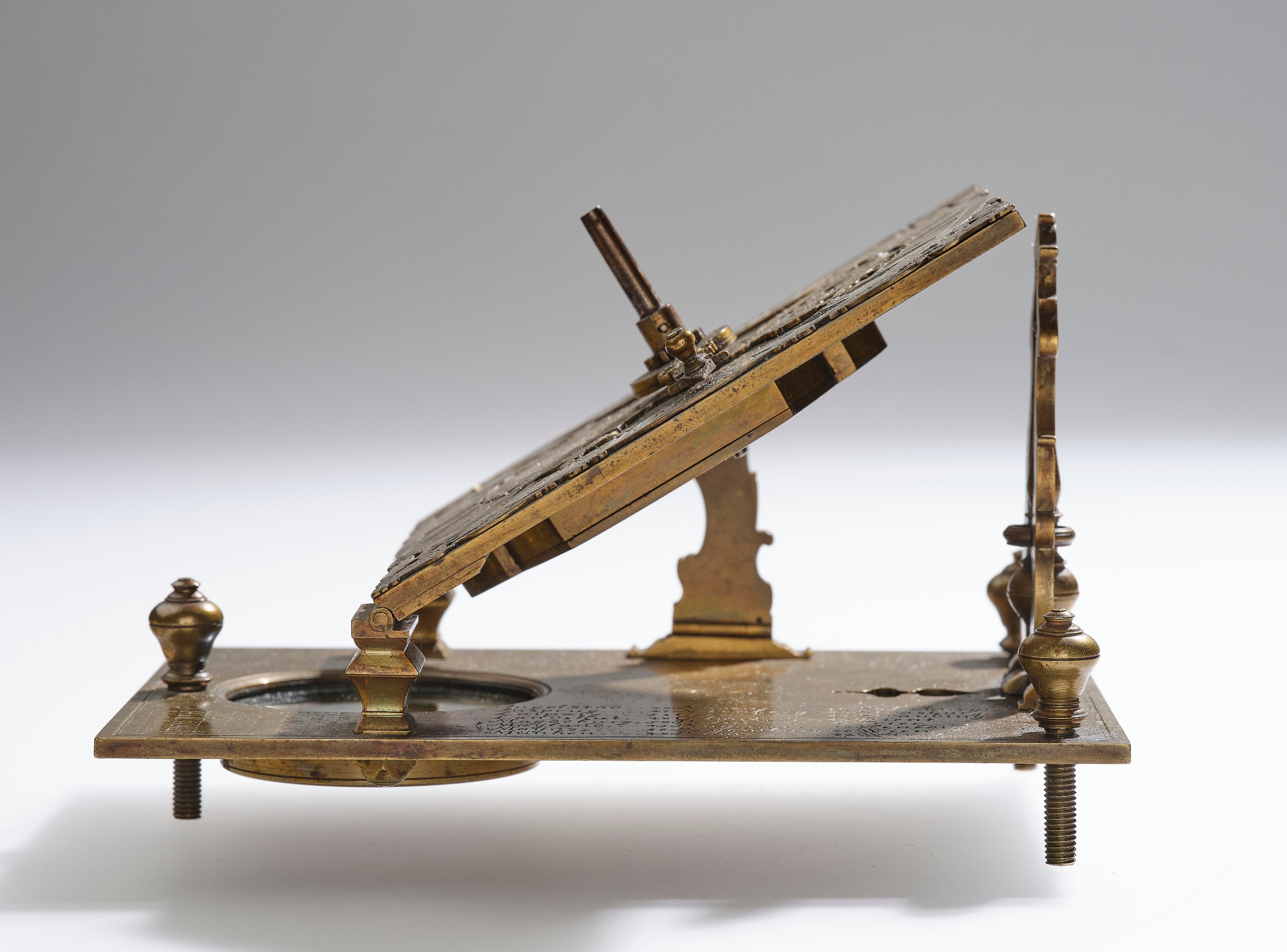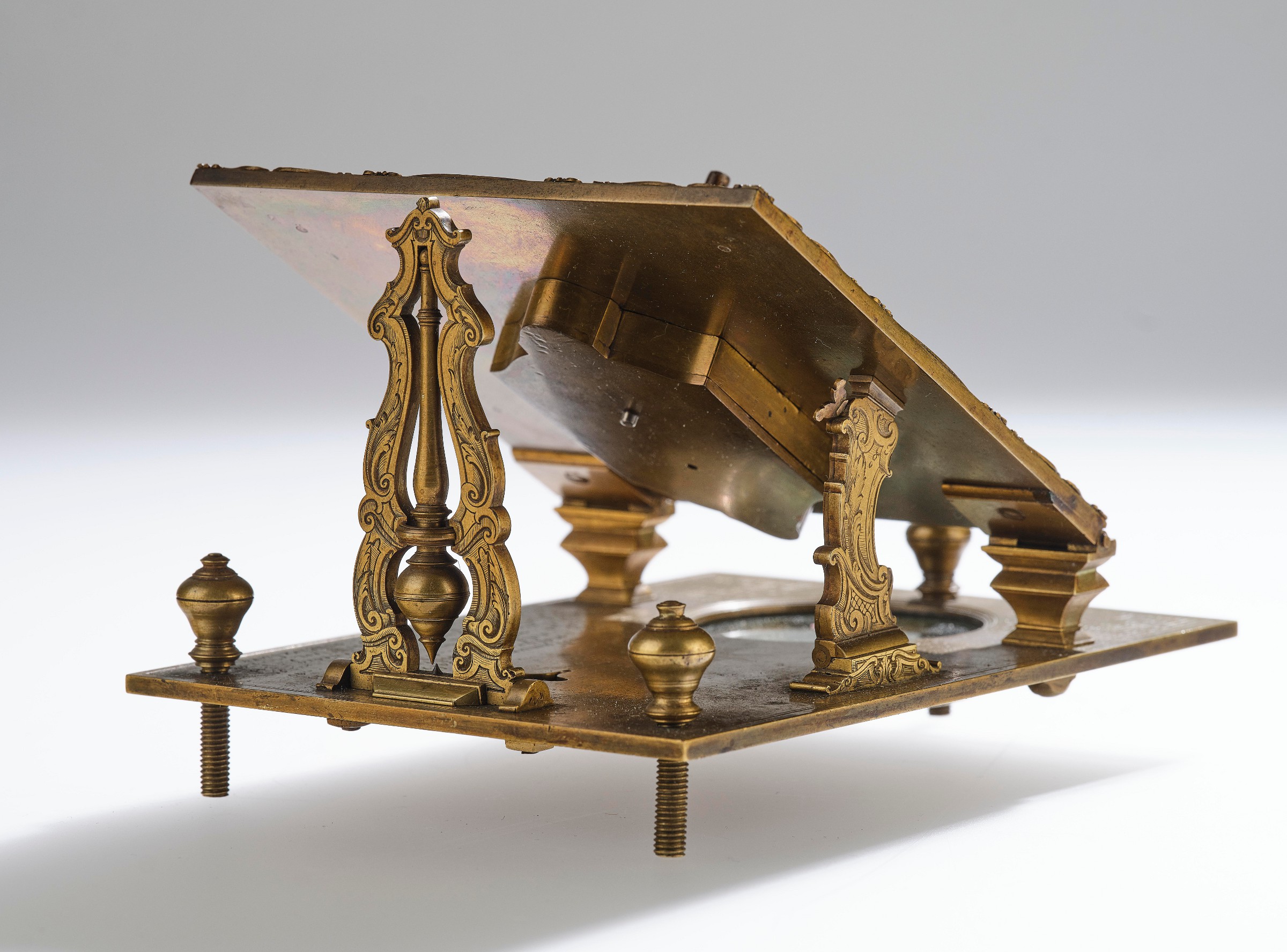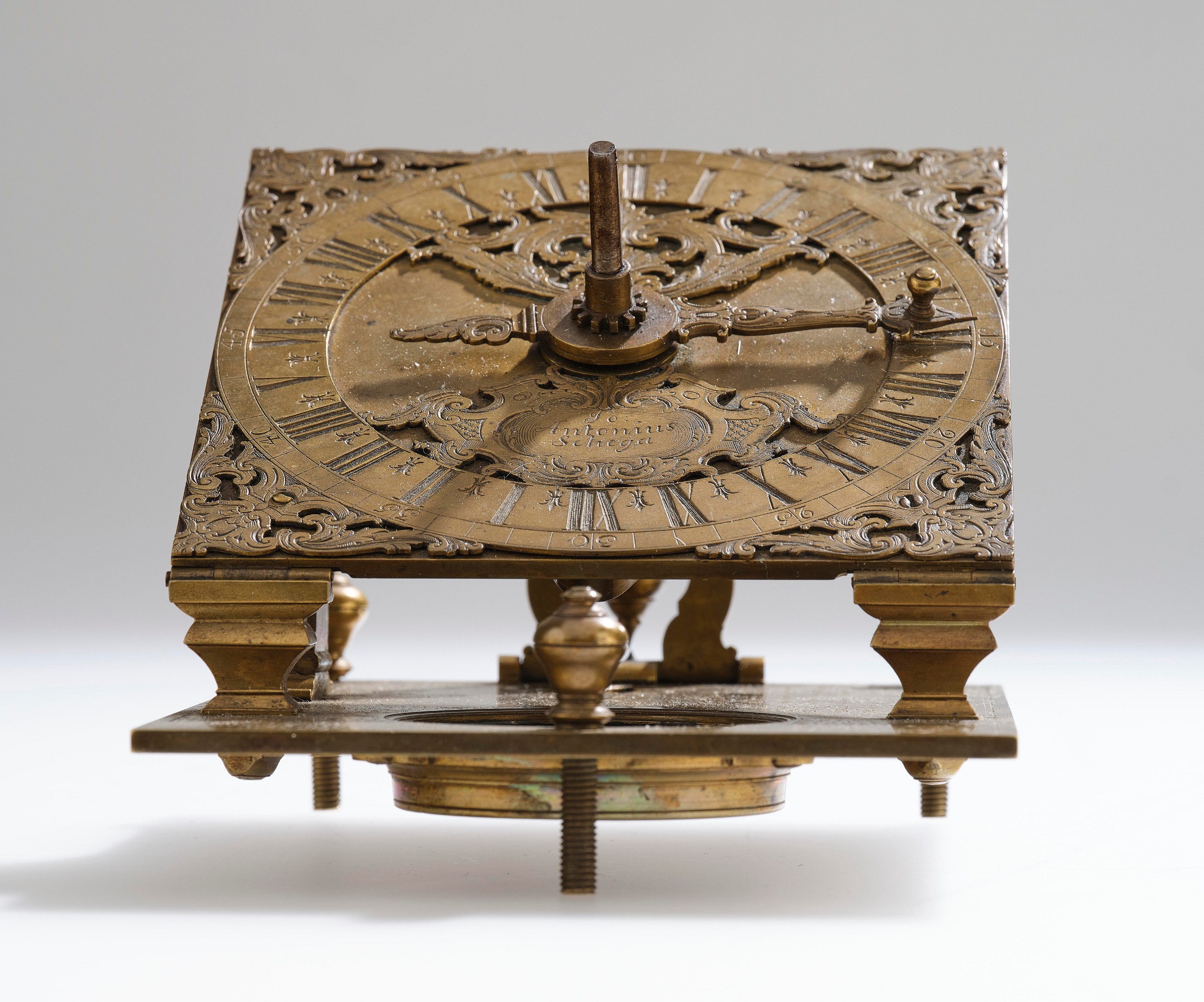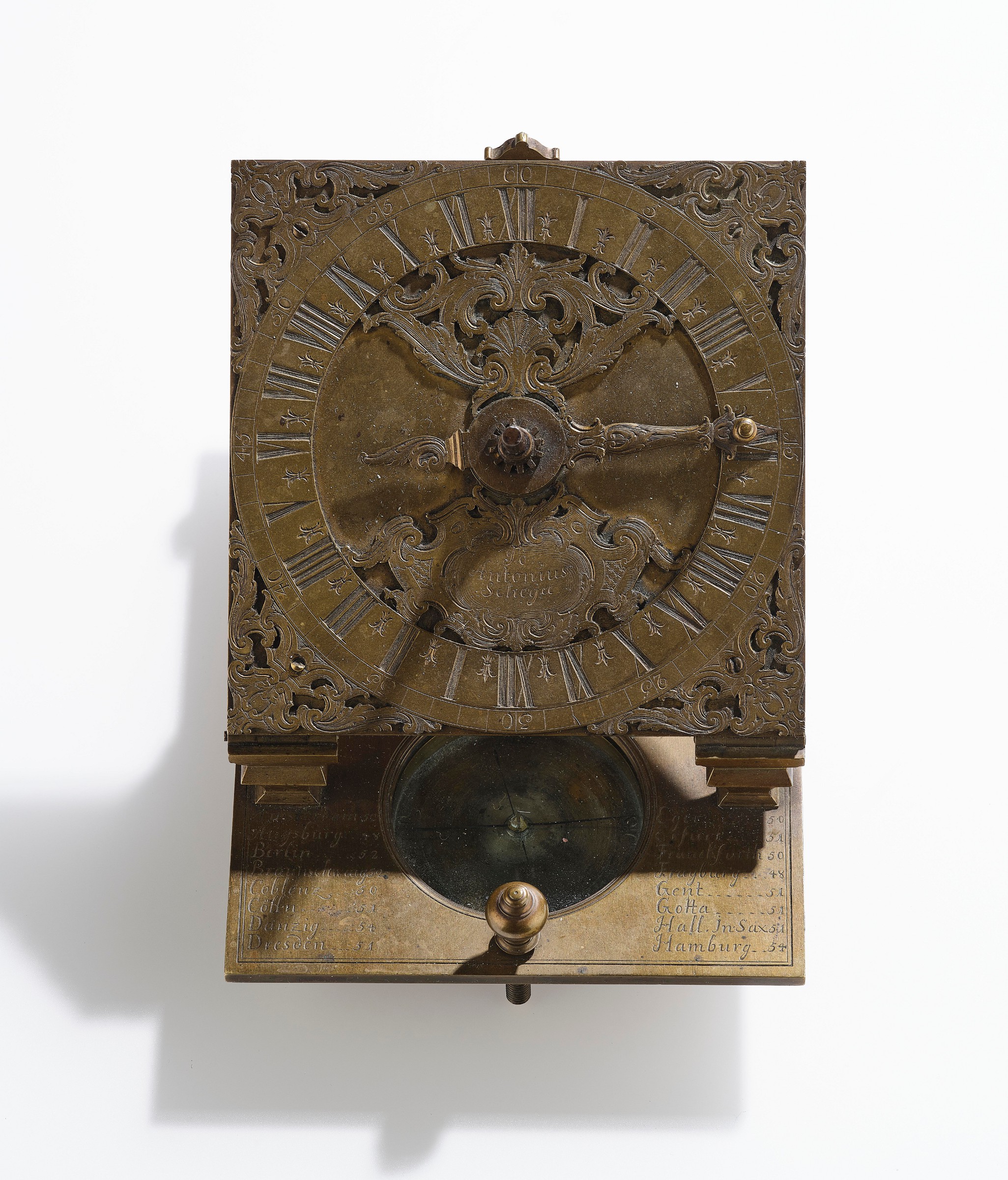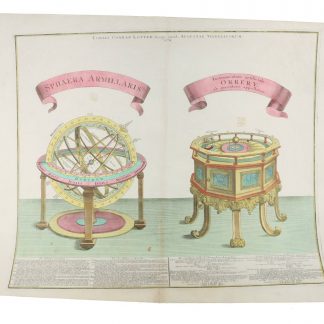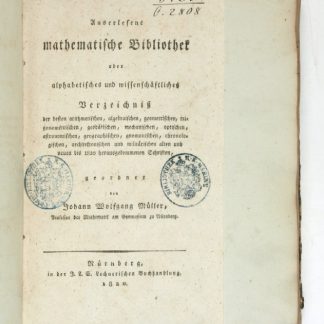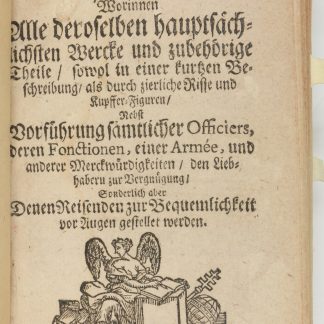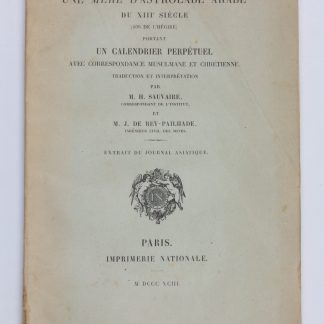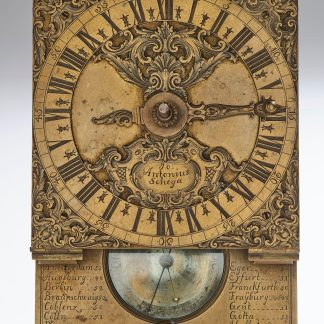Rare mechanical equinoctial table sundial
Mechanical equinoctial sundial, signed "Jo. / Antonius / Schega".
Brass and steel. Rectangular base, compass with silvered scale, table of latitude of 40 cities, folding plummet, and three screw feet, hour and minute scales with engraved foliate decorations, signature, pointer and steel axis (one pointer and alidade missing), back with cased crank wheels.
€ 28,000.00
Rare mechanical equinoctial table sundial by J. A. Schega, active in Augsburg, Munich, and Vienna. Born in Neustadtl (Rudolfswerth, now Novo Mesto, Carniola, Slovenia) as the son of the gunsmith Andreas Schega and his wife Catherina, the instrument maker Schega is first mentioned as a "mechanical artist" in Vienna in 1771. Here he built special lathes for artists as well as a machine for sharpening quills. His work in Augsburg and Munich is proved by a sundial in the History of Science Museum at the University of Oxford, signed "Antonius / Schega / in Augspurg / fecit" (Inv.-Nr. 33397, Coll. Billmeir), and by a sundial marked "Munich" that is now stored at the Technical Museum in Prague (cf. Webster Instrument Database). Johann Anton's brothers were Franz Andreas Schega (1711-87), active as a gunsmith and medalist in Munich since 1730, and Bartholoaeus Schega, another medalist active in Vienna.
Very prettily preserved.
Cf. Maximilian Bobinger, Alt-Augsburger Kompassmacher (Augsburg, 1966). The Salton Collection, Renaissance & Baroque Medals & Plaquettes, Bowdoin College Museum of Art (Brunswick, 1965). C. H. Josen, Scientific Instruments 13th-19th century, The Collection of J. A. Billmeir, Exhibited by the Museum of the History of Science (Oxford, 1955). La Collection Greppin, Instruments Scientifiques (Galerie Koller Zürich, 1975). Mailly, N. E., Catalogue des Collections Du Musée de l’Industrie (Bruxelles 1846).
Other mechanical equinoctial sundials by Schega are in the History of Science Museum, University of Oxford, Inv.-Nr. 33397, Collection Billmeir; in der Greppin Collection, 1975, Nr. 3150 (nearly identical); see also Sotheby's Paris, 4 Nov. 2015, lot 265 = Sothebys New York 25 April 1998, lot 233. The Webster Instrument Database accounts for further mechanical specimens in the Technical Museum in Prague, at Koller (Zurich), 17. Nov. 1973, and in a private collection. Additional, non-mechanical specimens are in the Munich City Museum, Spitzer sale (Paris 1893), at the Franconian Museum in Würzburg, and at the Bavarian National Museum in Munich.

